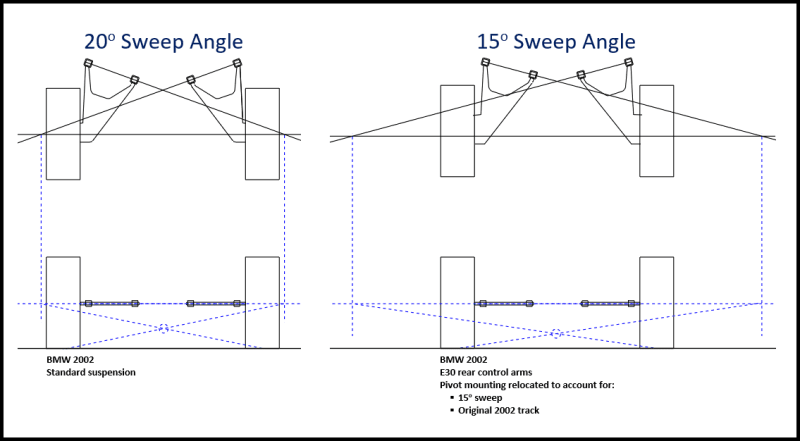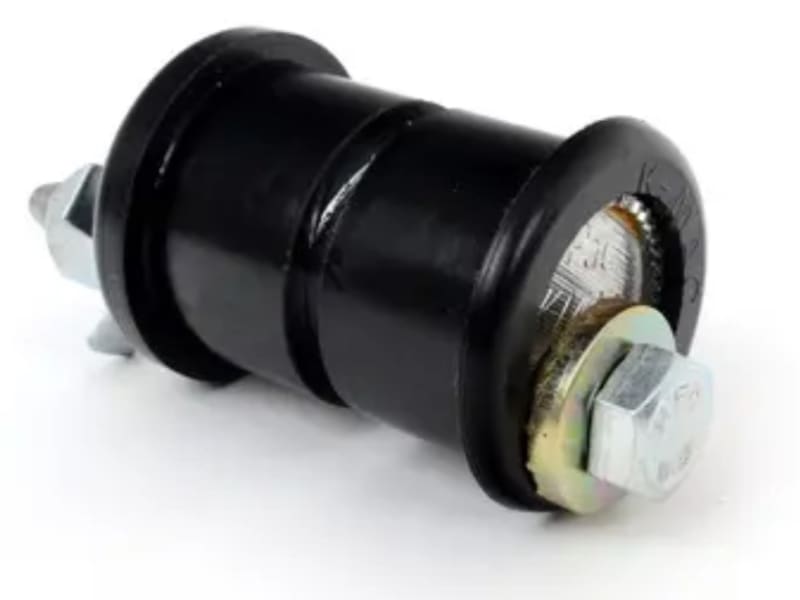DB Boatman
Automotive
I have some question about a BMW 2002 that is likely to get a 2-2.5 fold increase in hp. It's a pure toy car with occasional trips through the mountains and road course/track days. The issue is a question about roll center height from fitting E30 rear control arms to a BMW 2002. Fabrication is required as the 2002 arms have a 20° sweep angle c/w the E30 is 15° and the E30 has a wider rear track.
I was wondering about the impact on the RC from moving the E30 arm pivot mounts in-board to retain the same wheel track as the 2002. I did the not-to-scale drawing to try to understand what may happen. It seems the instant center will move outwards as a joint result of the sweep angle change and moving pivots points towards the centre of the car. Coupled with IC moving and narrower track, the RC will move downwards.
Doing some reading and to be honest I'm baffled. I have read Mitchell's Roll Center myths and reality and understand very little. I noticed that Brian Petersen said in another thread "Roll center too high at nominal ride height or in bump = BAD", which I get.
What's the impact of moving a roll center down on the rear of a semi-training arm suspension? Is this an issue that warrants any further thinking? Need I look further with actual measurements?

I was wondering about the impact on the RC from moving the E30 arm pivot mounts in-board to retain the same wheel track as the 2002. I did the not-to-scale drawing to try to understand what may happen. It seems the instant center will move outwards as a joint result of the sweep angle change and moving pivots points towards the centre of the car. Coupled with IC moving and narrower track, the RC will move downwards.
Doing some reading and to be honest I'm baffled. I have read Mitchell's Roll Center myths and reality and understand very little. I noticed that Brian Petersen said in another thread "Roll center too high at nominal ride height or in bump = BAD", which I get.
What's the impact of moving a roll center down on the rear of a semi-training arm suspension? Is this an issue that warrants any further thinking? Need I look further with actual measurements?



